Kumbhakarna Singh, popular as Maharana Kumbha (1417-68 CE) of Mewar, was among the most powerful Ranas of Mewar. Sisodiya Rajput dynasty ruled Mewar region of Rajputana since 14th century until 1947. Maharana Kumbha was the 5th ruler of Sisodiya Rajput dynasty. Kingdom of Mewar consisted a major part of Rajputana. So, in terms of territorial stretch, there is no comparison with the great empires those ruled Indian subcontinents. Maharana Kumbha is credited for protecting Mewar against the super powers of Mandore, Delhi, Gujarat and Malwa throughout his life.
Maharana Kumbha remained undefeated in all the battles he fought in his life. That was never possible until a solid defense system was planned. Maharana Kumbha restructured Mewar’s defense with 84 forts, many of which he built himself. The invincible fort of Kumbhalgarh was undoubtedly among the most noticeable constructions of Maharana Kumbha.
Maharana Kumbha was different in many ways compared to the other Ranas of Rajasthan. He was a great patron of art, music and literature. At the same time Maharana Kumbha had also marked his life as a great administrator, warrior and architect. He was also well recognized as a great philanthropist. Maharana Kumbha had built several monuments, which glorified the history of Mewar, Rajasthan.
Maharana Kumbha is a now a prestigious State Award. Began in 1980-81, Maharana Kumbha award was instituted to honour works (in history and literature) of permanent value to society.
Family History and Early life of Maharana Kumbha
Maharana Kumbha was born at Madariya in Sisodiya dynasty, a Hindu Rajput family of Mewar. Maharana Kumbha was the first son of Rana Mokal Singh and Sobhagya Devi. Young Rana Kumbha was well educated in literature and also was an exceptional veena player. He was well built strong young prince and liked my people.
Maharana Kumbha lost his father at the age of just sixteen. Rana Mokal, father of Maharana Kumbha, was killed by his paternal uncles Chacha and Mera. Local Bhil chieftains helped Rana Kumbha to ascend the throne of Mewar. Young Rana Kumbha, took revenge promptly after ascending the throne of Mewar.
During his early phase of reign, he faced several political challenges and intrigues. But Maharana showed a great bravery and diplomacy to overcome all political challenges.
Monuments Built by Maharana Kumbha
Maharana Kumbha is recognized among the most powerful Ranas of Mewar and Rajasthan. As a powerful warrior, Maharana Kumbha had built 32 forts, to strengthen the defense of Mewar. Kumbhalgarh fort was undoubtedly the most invincible among the forts built by Maharana Kumbha. But the splendid temples of Ganesha, Mamadev and Vedi also mark a great architectural sense of Maharana Kumbha.
The Sisodiya king had also added several constructions in Chittor Fort.The famous Kumbha Shyam temple and Shringar Chauri temple are some marvelous monuments built inside Chittor fort by Maharana Kumbha. Maharana Kumbha palace of Chittorgarh was another architectural marvel constructed by the Rajput king.
The Vijay Stambha made by Rana Kumbha of Mewar
The Vijay Stambha of Chittorgarh was among the extremely significant monuments built by Maharana Kumbha. The victory tower marks heroics of Maharana Kumbha against the joint forces of Gujarat and Malwa sultanates.
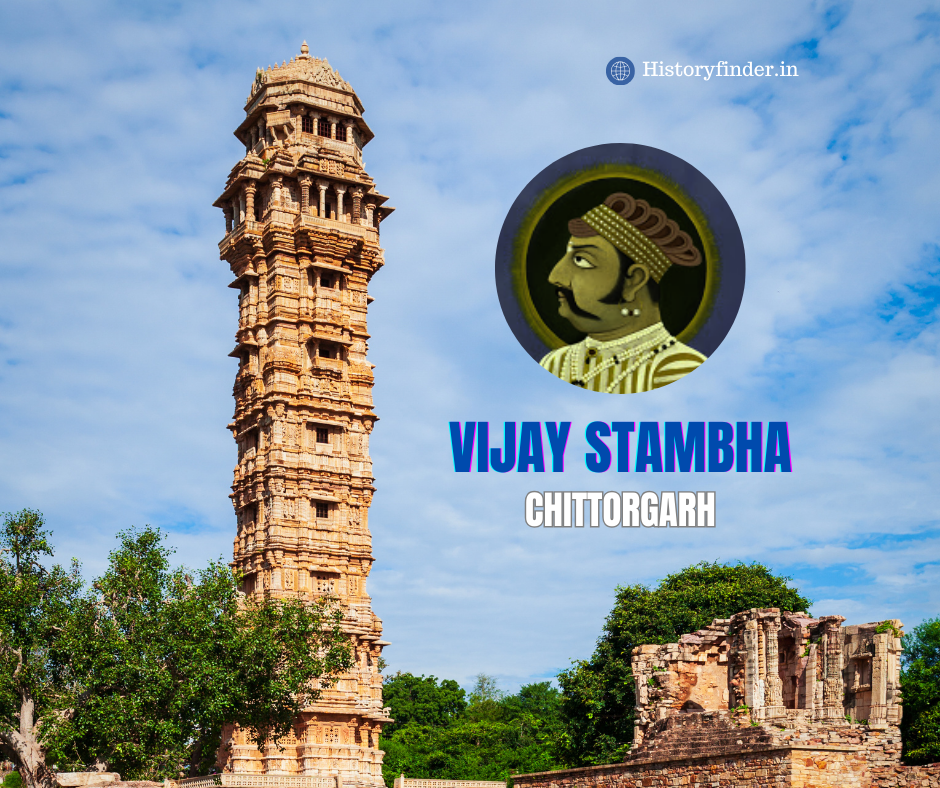
The Mewar Rana Kumbha had to fight most of his life with his neighboring states to protect Mewar. But his historic victory over the combined army of Gujarat and Malwa, was the prime reason of creating Vijay Stambha in 1448 CE at Chittorgarh.
Battles Fought and Won by Maharana Kumbha of Mewar
Maharana Kumbha fought about 56 battles in his life and successfully won most of them. conquered states like Bundi, Kota, Chatsu, Malpura, Amber, Dungerpur etc. Majority of these states accepted his suzerainty and came under his political influence. He also annexed Sambhar, Didwana, Mandore, Nagaur, Ranthambore, Sirohi, Gagran, Ajmer etc. to his empire.
According to inscriptions, he defeated and imprisoned Mahmud Khalji of Malwa for six months. Many historians also admire liberality shown by Rana Kumbha.
He won some critical battles that secured Mewar’s sustainability as Sisodia Kingdom.
Battle of Nagaur: Conflict with Gujarat Sultanate
Firoz Khan, Sultan of Nagaur, died in 1455. But after his death, his younger son Mujahid Khan discrowned his elder brother Shams Khan. Sensing his life threat, Shams Khan escaped to Mewar and asked for help. Rana Kumbha helped Shams khan to ascend the throne of Nagaur. But soon after Shams Khan became Sultan of Nagaur, he refused to keep his promise.
Realizing Sultan of Nagaur was strengthening his forces against Mewar, Rana attacked Nagaur Fort without further delay. In the high intensity Battle of Nagaur, Rana Kumbha defeated Shams Khan.
Victory at the Battle of Nagaur was an important achievement in Rana Kumbha’s military career.
Conflict with Ahmad Shah II of Gujarat Sultanate
Lost Sultan of Nagaur fled to Gujarat with his daughter. He also convinced Qutab-ud-din Ahmad Shah II, the Sultan of Gujarat to marry his daughter. Ahmad Shah II, on Shams Khan’s request, started his campaign to recapture Nagaur. In Rana’s absence, he first attacked the Kumbhalgarh fort. But failing to capture Kumbhalgarh Fort, he inflicted and damaged the Hindu temples of the fort.
Rana Kumbha waited till the Gujarat army reach Nagaur. Once Gujarat army reached Nagaur, Rana Kumbha crushed the Gujarat army in a severe engagement.
Battle of Sarangpur and defeating Mahmud Khalji of Malwa
Mahpa Panwar, an assassin of Rana Mokal Singh, was hiding under the shelter of Mahmud Khalji. Maharana had warned Khalji many a time for safeguarding Panwar. But Khalji refused to do so. In 1437 CE, Maharana Kumbha finally attacked Malwa. Over a severe engagement in the Battle of Sarangpur, Mewar army crushed Malwa army.
Mahmud Khalji, after losing the Battle of Sarangpur, refuged at the fort of Mandu.
Rana’s army also followed him up to Mandu and captured Khalji and took him to Chittor Fort. He kept Khalji in Chittor Fort prison for six months. But Mahpa Panwar managed to escape to Gujarat. He was kind enough to release Mahmud Khalji after six months of imprisonment.
Battle of Mandalgarh
Mahmud Khalji didn’t give up at all. Five years later, in 1442 CE, Khalji received a news that Rana was out Chittor on an expedition. Immediately he left Malwa to invade Chittor. On the way, he attacked and destroyed Bana Mata temple near Kumbhalner.
Hearing about these incidents, Rana Kumbha returned to Chittor immediately. The two armies met near Mandalgarh. But the Battle of Mandalgarh ended indecisively. However, few days later, Rana attacked Khalji’s army again and demolished it. Mahmud Khalji refuged at Mandu once again.
Battle of Banas
Khalji didn’t give up yet. He took another four years to reform his troop against Mewar.
In October of 1446 CE, he again started proceeding towards Mandalgarh. But Maharana Kumbha was prepared with his forces while Malwa army was crossing the river Banas. Mewar army again destroyed Malwa army at the Battle of Banas. Mahmud Khalji refuged at Mandu again.
But comprehensively losing the battle of Banas, Mahmud Khalji never attacked Mewar.
Maharana Kumbha Personality
Maharana Kumbha held a great personality. On one side Maharana Kumbha represented a tough, disciplined person, an invincible warrior, a great patriot, diplomat and politician. But on the other side, he was a fantastic musician, a writer, and great patron of art and culture. The Hindu Rajput king, who had built several temples within his fort facilities, was definitely a Hindu devotee.
There are several legends about Maharana Kumbha height and remarkably well built body structure. According to the legends, Maharana Kumbha height was about 9 feet. Another legend mentions that the huge Shiva Linga of Mamadev Temple, would match his height when he sat down to worship. Maharana also had a incredible sense of political and diplomatic values. His diplomatic and political approaches were the key factor to protect Mewar state under such political turbulence.
Maharana Kumbha also left his marks in cultural fields. The greatest king of Mewar himself was an exceptional Veena player. He also shown a great interest of music and arts. He accommodated many artists and musicians in his court.
Rana Kumbha of Mewar was well versed in Sanskrit, Prakrit and of course, local dialects of Mewar. He also left his footprint on music. His own creations like ‘Sangit Raj’, ‘Sangit Mimansa’, ‘Sangit Ratnakar’ and ‘Sudprabandh’ are impeccable. Further, his own commentaries on Jaydev’s ‘Geeta Govinda’ and ‘Chandsatkam’ elaborates his depth of knowledge in literature.
Maharana Kumbha Death and Aftermath
Maharana Kumbha was killed by his own son, Uday Singh I in 1468. Uday Singh was doubtful about his chances as a successor of Mewar’s throne. So, he killed Maharana Kumbha while Maharana was praying in Kumbha Shyam temple, Kumbhalgarh.
Uday Singh I ascended the throne of Mewar but as an infamous patricide, ‘Uda Hatiyaro’ (Uda murderer). He couldn’t survive too long as well. Some legends mention that he died of a lightning strike. Another legend mentions that Rana Raimal Singh, other son of Maharana Kumbha, killed Uday Singh to take his father’s revenge. Rana Raimal Singh had a long and stable reign (1473-1509 CE) of Mewar.

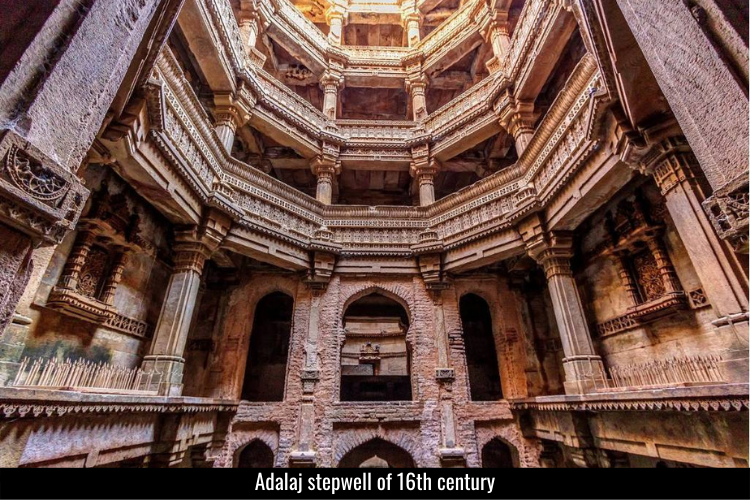
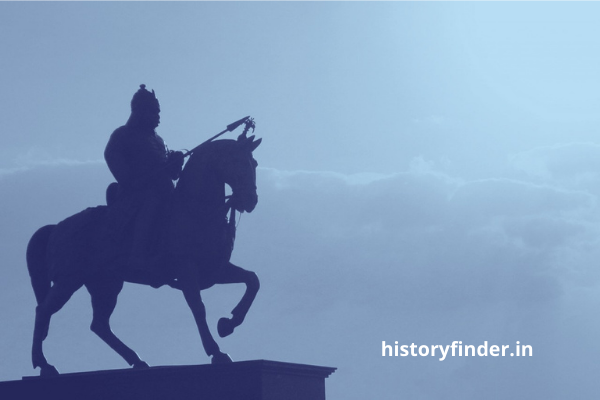
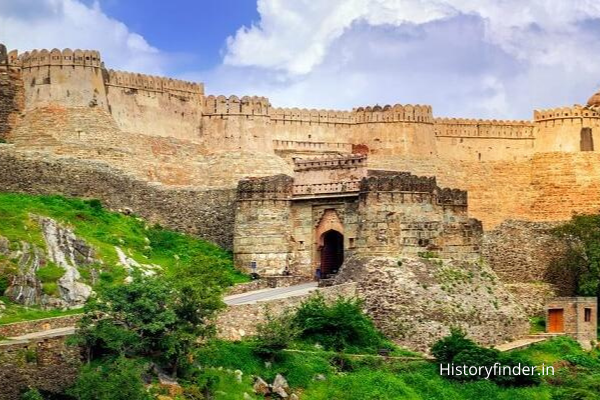
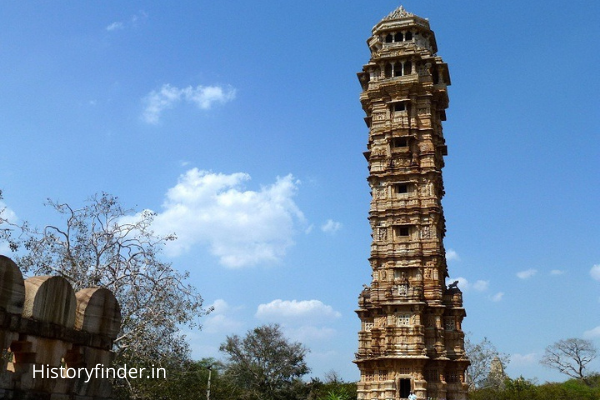
Pingback: Chittor Fort - History Finder
Pingback: Malwa Sultanate History and Legacy - History Finder